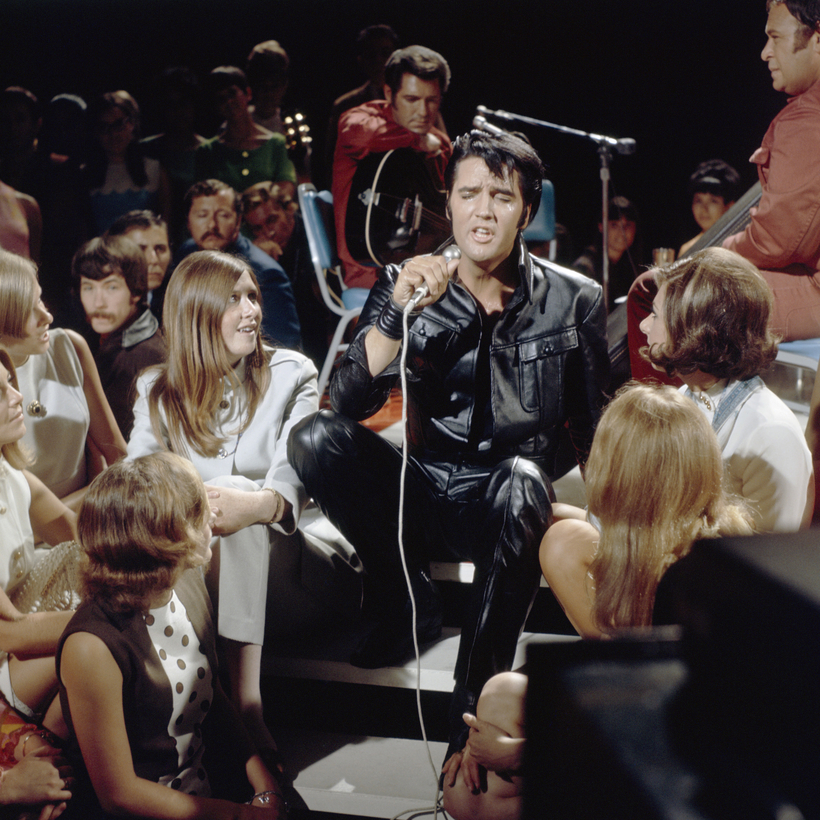For some of us, perhaps the worst cultural deprivation endured during lockdown was not being able to go hear live music. No concerts? One of life’s great pleasures, gone. Because a live show, when everything is working—and sometimes even when it isn’t—can be utterly transporting.
All music fans, whatever their tastes, know that feeling. It might last a moment—say, Linda Thompson’s exquisite, set-closing “Dimming of the Day” in a packed, hushed club, too many years ago. Or maybe it’s a jaw-droppingly brilliant one-off gig, such as William Bell’s at New York’s Cutting Room in 2016. Or the sometimes shambolic (but always charming) musical pub crawl that the reliably unpredictable Kinks led their devotees on during much of the 70s. Evenings like those, and so many others … well, there’s simply nowhere in the world you’d rather be.
If you recognize that feeling, you’ll find much to relate to, and enjoy, in Marc Myers’s Rock Concert: An Oral History as Told by the Artists, Backstage Insiders, and Fans Who Were There. Myers, a music writer for The Wall Street Journal, starts with rock’s post–World War II R&B roots and ends with Live Aid in 1985, “perhaps the last spectacular rock concert before ticket prices climbed significantly and concert revenue became the leading moneymaker for rock artists, not albums.”

Providing excellent context, he’s assembled a narrative whose themes include politics, geography, economics, class, and race, as well as the music itself. And while he necessarily covers familiar territory—the Elvis phenomenon, Dylan plugging in, Woodstock, Altamont—he comes at those watershed episodes from fresh angles, as we hear throughout from promoters, fashion designers, roadies, photographers, and so on.
Still, it’s the less gnawed-over material that’s the most beguiling. Here’s the jazz-and-blues singer Ernie Andrews on working as an usher at Los Angeles’s Lincoln Theater as a teenager in the 40s: “Amateur nights, on Wednesdays, were packed. Everyone who was trying to break into show business would appear. I sang on those nights in my uniform. After each performance, you’d wait for Pigmeat Markham or Bardu Ali or Sybil Lewis to come out and hold a hand over your head. If the audience didn’t like you, they’d let you know it, and you’d have to get off.”
Then there’s another teenager, Ronnie Spector, sneaking into New York’s Peppermint Lounge with her sister and her cousin (“To look older, we stuffed Kleenex in our bras, dressed in the same outfits, and held cigarettes”), being mistaken by the club’s manager for dancers, told to get onstage and, eventually, to sing. Before long they were famous as the Ronettes and touring the U.K. “Our records did so well over there that we were the headliner,” she says. “The Rolling Stones opened for us. I know, right? My mother came along. If someone had a birthday, we celebrated with cake and soda.”

Yes, the oral-history approach can be a kick when the voices are engaging, as they frequently are in Rock Concert.
Blondie’s Chris Stein: “The first time we went to Australia in 1977, John Denver was there and it was such a huge deal. Every time we tried to rent a piece of equipment, the answer was: ‘Oh, John Denver has it.’ It was like there were only three amplifiers and all of them were on John’s truck.”
The rockabilly star Wanda Jackson, on opening for—and first meeting—Elvis Presley one night in 1955: “Heck, I was seventeen and Elvis was nineteen. As I looked him up and down, I realized he looked very different from other guys his age at the time.… He wore slacks. I don’t think he ever owned a pair of jeans.”
Jerry Martini, sax player for Sly and the Family Stone, on trying to take the stage at the Apollo in New York in 1969 and being forced to wait in the wings: “I got booed. The Black audience up there wasn’t used to seeing a white face onstage.… [Sly] went up to the mic and said, ‘You know what? It ain’t about what color you are in this band.… Play, Jerry.’ … I closed my eyes and played some blues without accompaniment. Then a girl in the audience yelled out, ‘Send that boy out here.’”

And Sire Records cofounder Seymour Stein, on attending D.J. Alan Freed’s revues at the Brooklyn Paramount as a passionate 13-year-old in 1955: “I knew I could stay from 9:30 a.m. to around 6:00 p.m. and see all three shows.… Seeing the music up close was much more exciting than just hearing it on the radio. It was very emotional for me.… I choke up today just talking about Alan Freed’s rock ’n’ roll shows at the Paramount. They had a profound effect on me and my career.”
Speaking of profound effects: August 1975, New York City, the Bottom Line. Four stoned teenagers, having sprung for $5 tickets, are at a stage-side table, onto which a 25-year-old Bruce Springsteen suddenly decides to leap mid-song, no doubt in the service of illustrating some larger musical point. All of us understand, as we pull our beers out of harm’s way, that there’s simply nowhere in the world we’d rather be.
Rock Concert: An Oral History as Told by the Artists, Backstage Insiders, and Fans Who Were There, by Marc Myers, will be published on November 9 by Grove Press
George Kalogerakis is a Writer at Large for AIR MAIL

